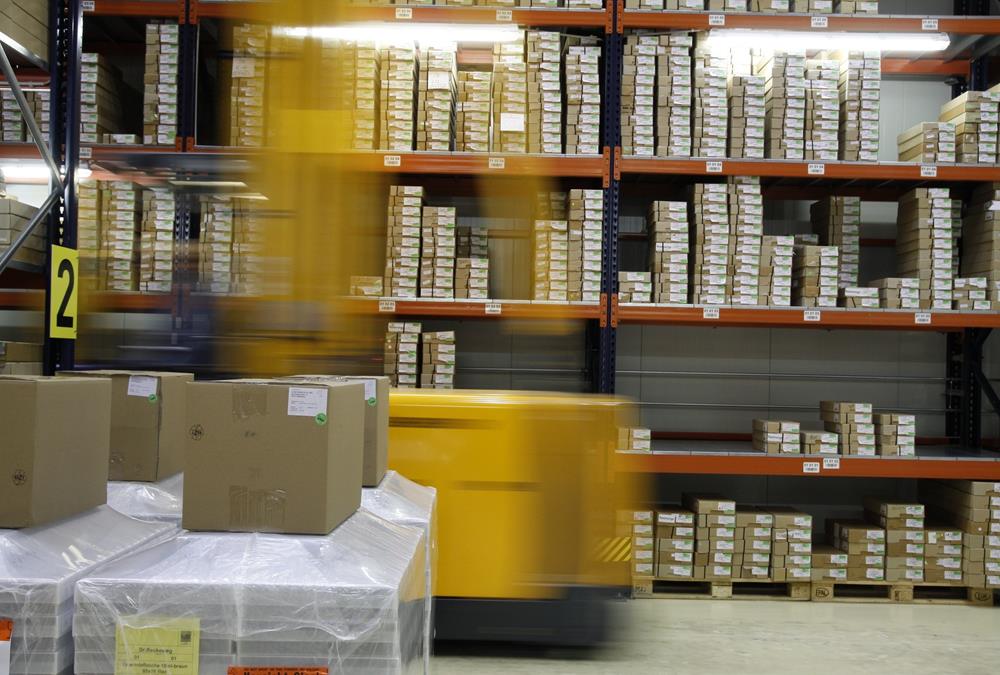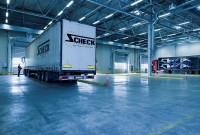- Home
- Business Processes
- Industry Knowledge
- Aerospace Industry
- Automotive Industry
- Banking Domain
- BFSI Industry
- Consumer/ FMCG Industry
- Chemicals Industry
- Engineering & Construction
- Energy Industry
- Education Domain
- Finance Domain
- Hospitality Domain
- Healthcare Industry
- Insurance Domain
- Retail Industry
- Travel and Tourism Domain
- Telecom Industry
- Leadership Skills
- eLearning
- Home
- Functional
- Procure to Pay
- Warehouse Packaging Process
Warehouse Packaging Process
Before shipping, businesses need to make sure that the items will arrive in good condition. Packaging is a form of protection against environmental threats that the product will face from the time it leaves warehouse facility until the time it reached the customer. The packaging is intended to provide protection for the item as it is being handled in the warehouse or when the item is being shipped.
What is Packing?
Before shipping, businesses need to make sure that the items will arrive in good condition. Packaging is a form of protection against environmental threats that the product will face from the time it leaves warehouse facility until the time it reached the customer. The packaging is intended to provide protection for the item as it is being handled in the warehouse or when the item is being shipped. In this process, warehouse workers pick products from the storage locations and move them to a packing station where they check the item quantities and types, and assign them to appropriate containers. When a container is fully packed, they can close it and move it to the outbound docks, and the products are ready to ship.
Packing Process
The packing process allows you to validate and pack products into containers. Packing in a warehouse depends on the way the inventory is picked and the reference available to the packer. Packing also depends on the containerization process. Once an order is picked, it is handed off to a packer. The packer is responsible for securely placing the items in a box or poly mailer, adding in any needed packing materials, and putting a shipping label on it.
Packaging Product Dimensions
Before items can be stored or packed efficiently, warehouse management system need to understand and define packaging product dimensions for each of the product. Each dimension type provides a set of physical measurements (weight, width, depth, and height), and establishes the process where those physical measurement values apply.
Some examples of packaging dimensions are given below:
Storage Storage dimensions: are used along with location volumetric to determine how many of each item can be stored in various warehouse locations.
Packing Packing dimensions: are used during containerization and the manual packing process to determine how many of each item will fit in various container types.
Nested Packing: Nested packing dimensions are used when the packing process contains multiple levels.
Shipping Dimensions Shipping dimensions of the product may be different from actual, laid out dimensions. Shipping dimensions refer to the size of the item or package when it will be shipped. This may include extra padding or wiggle room required.
Packaging Types
There are different types of packaging that are used for finished goods; internal packaging and external packaging. The external packaging must be sufficient to protect the internal packaging as well as the finished item. The external packaging should have dimensions that allow a suitable quantity to be stored on a pallet most efficiently. Choosing the right packaging for a shipment depends on the products, the shipping method, and the destination. The right packaging method is the one that ensures that your product arrives in good condition for the lowest cost.
- By far the most common form of packaging is cardboard, also known as corrugated fiberboard or just corrugate. Corrugate is cheap, strong, and light, so it’s the perfect material for packaging all kinds of products.
- Some products can still get damaged if they move around inside a cardboard box, however. One solution is to add filler materials such as packing paper, packing peanuts, or bubble wrap.
- If the products you’re shipping are sensitive to moisture, there may be a need to use an anticorrosion coating, special wrapping, or moisture-absorbing packets.
- Electronic products are sensitive to static electricity, so these products require special protection against electrostatic discharge.
Packing Materials and Fees
Packing material fees are paid to vendor company based on per unit of weight, for each material that a packing unit consists of. Packing material weights and fees are calculated for sales order lines and purchase order lines. Packing Cost is calculated based on type of packing material and price of same for a specific period.
Related Links
You May Also Like
-
Resource Planning is the process of planning for expected workload and determining the number of resources required to complete each activity in the warehouse. There are many types of warehouse positions, and they also vary by the employer, the scale of operations and location. Discussed here are generic positions applicable to warehouse management processes.
-
Warehouses may seem like a simple, straightforward concept, but they actually include a variety of different types of warehouses that all have their own niche. The type of warehousing that’s right for you depends on your specific industry, location, and needs. From private warehousing, distribution centers, and climate-controlled warehouses, there’s an option to suit every business.
-
When products arrive at a facility, there need to be a defined process to let them in. The process for accepting inventory when it arrives is called "Receiving". Any warehousing operation must be able to receive inventory or freight from trucks at loading docks and then stow them away in a storage location. Receiving often involves scheduling appointments for deliveries to occur, along with unloading the goods and performing a quality inspection.
-
Warehouse management and distribution logistics involve the physical warehouse where products are stored, as well as the receipt and movement of goods takes place. Warehouse management aims to control the storage and movement of products and materials within a warehouse. These operations include the receipting of inwards goods, tracking, stacking and stock movement through the warehouse.
-
Warehouses can be places where piles of packed or loose products occupy space. If left disorganized, it will become very challenging to identify products for packing or picking. Hence, proper organization of warehouse is very important. Warehouse labeling systems eliminate this problem by making sure products are easily identified and managed during the warehousing and shipping process. Labeling is the most functional and cost-effective way to keep your warehouse organized and operating efficiently.
-
Overview of Third-Party Logistics
Third-party logistics (abbreviated as 3PL, or TPL) is an organization's use of third-party businesses to outsource elements of its distribution, warehousing, and fulfillment services. A third-party logistics provider (3PL) is an asset-based or non-asset based company that manages one or more logistics processes or operations (typically, transportation or warehousing) for another company.
-
Inventory is money, and hence businesses need to perform physical inventory counts periodically to make sure that their inventory records are accurate. The traditional approach to conducting inventory counts is to shut down a facility during a slow time of year to count everything, one item at a time. This process is slow, expensive, and (unfortunately) not very accurate.
-
Types of Inventory Count Processes
While dealing with lots of inventory in a warehouse, lots of things can go wrong. Shipments may not have the right number of units in them, or they could get damaged somewhere along the supply chain. Discrepancies in the stock may arise as part of every inventory control, and need to be corrected immediately after the inventory control procedure has been finished.
-
Miscellaneous Warehouse Processes
At the end of each inventory control, the Contractor provides the Ordering Person with an inventory report which contains a list of all stock adjustments. The Ordering Person uses the report to create, by use of his/her own means, necessary value and accounting adjustments related to the stock. Let us look at some to the mislaneous warehouse processes not covered earlier.
-
One of the warehousing best practices that retailers like Walmart, Amazon, and Target have adopted is known as cross-docking. During this process the inbound products are unloaded at a distribution center and then sorted by destination, and eventually reloaded onto outbound trucks. In real parlance, the goods are not at all warehoused but just moved across the dock (hence the name).
Explore Our Free Training Articles or
Sign Up to Start With Our eLearning Courses

About Us
Learning
© 2023 TechnoFunc, All Rights Reserved











